Genotyping
Genotyping is the process of determining an individual's genetic makeup by analyzing their DNA sequence. This information can be used to identify genetic variations, mutations, and polymorphisms. Genotyping plays a crucial role in various scientific fields including medicine, agriculture, and evolutionary biology.
Methods of Genotyping
There are several methods used for genotyping, including:
- Polymerase Chain Reaction (PCR): This technique amplifies specific regions of DNA, allowing for the detection of genetic variations.
- Restriction Fragment Length Polymorphism (RFLP): RFLP analysis identifies variations in DNA sequence by cutting the DNA into fragments using restriction enzymes.
- Sequencing: DNA sequencing provides the exact order of nucleotides in a DNA molecule, enabling the identification of genetic variations.
- Microarray Analysis: Microarrays can be used to simultaneously genotype thousands of genetic markers across the genome.
- Next-Generation Sequencing (NGS): NGS technologies enable rapid sequencing of entire genomes, making it a powerful tool for genotyping.
Applications of Genotyping
Genotyping has numerous applications, including:
- Medical Research: Identifying genetic risk factors for diseases and determining individual responses to medications.
- Forensic Science: DNA genotyping is used for human identification and solving criminal cases.
- Agriculture: Genotyping is essential for breeding programs to select plants or animals with desirable genetic traits.
- Evolutionary Studies: Understanding genetic variations within and between species to study evolutionary processes.
Study Guide for Genotyping
Here are some key topics to study for genotyping:
- Understanding DNA structure and composition
- Principles of PCR and its application in genotyping
- Types of genetic variations (e.g., SNPs, insertions, deletions)
- Comparison of different genotyping methods and their advantages/disadvantages
- Real-life applications of genotyping in various fields
By understanding genotyping, you can gain insights into the genetic diversity of organisms and its implications in different disciplines.
.◂Science Worksheets and Study Guides Fourth Grade. Plant Structure and function
Study Guide Plant Structure and function
Plant Structure and function  Worksheet/Answer key
Worksheet/Answer key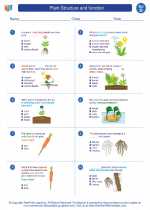 Plant Structure and function
Plant Structure and function  Worksheet/Answer key
Worksheet/Answer key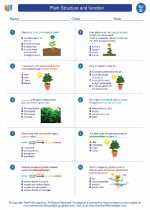 Plant Structure and function
Plant Structure and function  Worksheet/Answer key
Worksheet/Answer key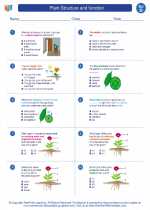 Plant Structure and function
Plant Structure and function  Vocabulary/Answer key
Vocabulary/Answer key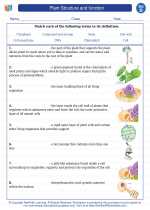 Plant Structure and function
Plant Structure and function  Vocabulary/Answer key
Vocabulary/Answer key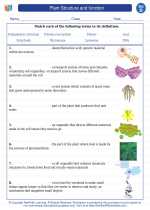 Plant Structure and function
Plant Structure and function  Vocabulary/Answer key
Vocabulary/Answer key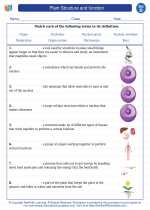 Plant Structure and function
Plant Structure and function  Vocabulary/Answer key
Vocabulary/Answer key Plant Structure and function
Plant Structure and function 

 Worksheet/Answer key
Worksheet/Answer key
 Worksheet/Answer key
Worksheet/Answer key
 Worksheet/Answer key
Worksheet/Answer key
 Vocabulary/Answer key
Vocabulary/Answer key
 Vocabulary/Answer key
Vocabulary/Answer key
 Vocabulary/Answer key
Vocabulary/Answer key
 Vocabulary/Answer key
Vocabulary/Answer key

The resources above cover the following skills:
LIFE SCIENCE (NGSS)
From Molecules to Organisms: Structures and Processes
Students who demonstrate understanding can:
Construct an argument that plants and animals have internal and external structures that function to support survival, growth, behavior, and reproduction.